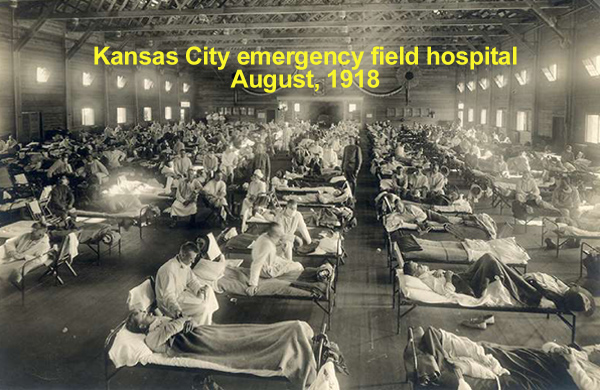
Comparisons with the 1918 flu pandemic are problematic, but there is no other relevant history that might give us any insights into the future of the coronavirus. We’re stuck with it, and I’m struck by how similar so far the histories of the two pandemics seem to be.
And I’m aghast by the possibility of Africa smashing the similarities to smithereens.
The history of the “Spanish Flu” is almost exclusively restricted to what happened in the northern hemisphere, with the exception of South Africa where the trajectory of the pandemic mirrored that of the northern hemisphere.
This was likely because of the enormous number of ships that began sailing into Cape Town and Durban before the first Boer War in 1898 and continued straight through and after World War I. By the 1920 South Africa rivaled its former colonizer, Britain, in shipping tare weight.
And it now seems similar today. To be sure, South Africa is way behind western countries, having vaccinated less than a half percent of its population. But this wouldn’t have been the case if the country hadn’t made a bad bet and partnered with the AstraZenca vaccine.
After administering just a few of its contracted millions of doses, the South African health department revoked authorization, and the pivot the country has had to make from this singular gamble has caused serious delay. They’re getting over that bad wager, though, and the pace of vaccinations is soon to increase substantially.
I’m pretty certain that by the end of August South Africa’s percent of vaccinations will be very close to much of Europe’s, once again distinguishing itself as completely different from the rest of the continent.
There were lots of vaccines developed before and during the 1918 pandemic, but they didn’t control the virus because they were all bacterial vaccines. It’s likely that the million or more doses administered just in the United States did reduce deaths from secondary infections, but they did nothing to stop the spread of the actual virus.
What stopped the virus was herd immunity.
The differences between Covid-19 and the 1918 Spanish Flu are manifold. Yet when we study the graphs of both diseases they are remarkably similar.
The first wave defined the historic start of each pandemic. In 1918 that was March. The second wave was the most lethal and began in late summer. The third wave in early 1919 was the longest but with the least deaths and hospitalizations.
“As social distancing measures were enforced, the second [1918] wave began to die down toward the end of November. Once those measures were relaxed, however, a third wave began in the winter and early spring of 1919.“ – Britannica
There were just as many public health mitigation efforts including masking and social distancing much more rigorously enforced in 1918 than for the pandemic today in America.
Superficially at least, it seems that the only real difference in the two pandemics was an efficacious vaccine.
By the graphs.
There were far fewer people in 1918 and with the exception of metropolitan areas, far less dense populations. Travel and other interactions were fractional compared to today. So vectors of spreading are exponentially greater today.
Yet look at the graphs.
The 1918 graph flatlines by the summer of 1919.
“Some historians suggest that there was a fourth wave in winter 1920, though it was far less virulent” and heavily debated. Indeed, it may simply have been the ordinary flu.
When the 1918 pandemic was over, “about 550,000″ people in the U.S. had been killed, or about 0.5% of the population. So far in the U.S. the pandemic has killed 559,116 people or 0.2% of the population.
Effective vaccines contribute to herd immunity in the same way as those who get the virus and recover armed with natural antigens, or so we presume from the behavior of past viruses.
The implication is obvious. In the U.S. and by extension the developed world, the pandemic will be over by the end of summer.
Maybe.
The developing world has been shoved to the end of the line as far as vaccines go. They are far more densely populated than they were in 1918. There are riveted with poverty and the lack of good public health that naturally occurs as a result. There are probably … probably many more mutations much more virulent and deadly growing in the developed world.
Though our two most virulent mutations today carry names from “South Africa” and “Britain”, recognize that both countries are less likely the petri dishes for these mutations than the portals.
Britain very late grew sensitive to open borders, having celebrated the end-of-the-year vacationing Brit who had been released from the island all over the world with glee.
In its best form, South Africa’s borders resemble a poorly latticed pie.
So I believe more and more every day in the implications of the graphs. But I’m worried that the waves currently so evident in the developing world portend a whole new battle off the historical and current graphs. I’m worried that achieving herd immunity to Covid-19 and its initial generation of mutants will be powerless against the next generation of coronavirus.
If ever there was a need to think globally, it’s now.